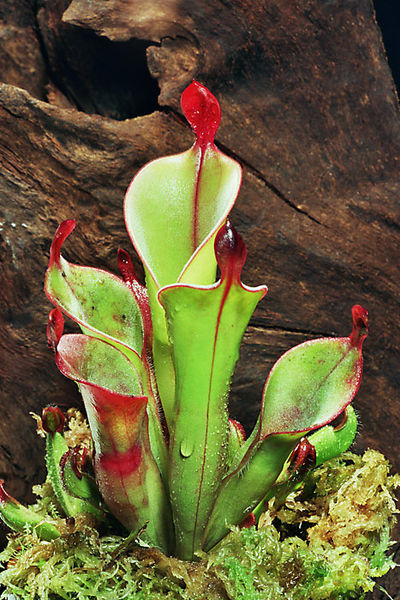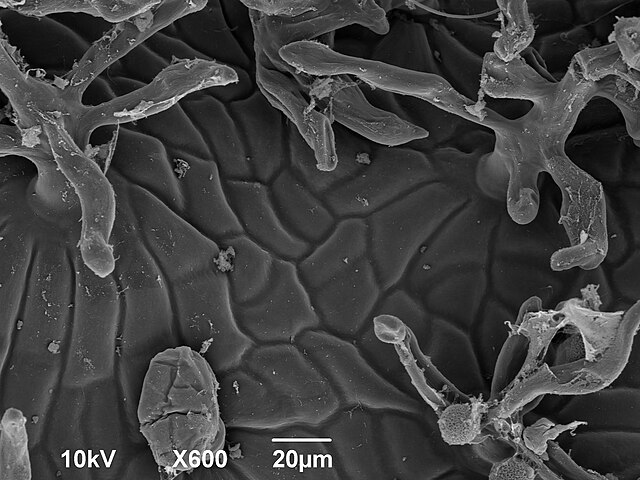The genus Heliamphora contains 24 species of pitcher plants endemic to South America. The species are collectively known as sun pitchers, based on the mistaken notion that the heli of Heliamphora is from the Greek helios, meaning "sun". The name instead derives from the Greek helos, meaning "marsh", so a more accurate translation of their scientific name would be marsh pitcher plants. Species in the genus Heliamphora are carnivorous plants that consist of a modified leaf form that is fused into a tubular shape. They have evolved mechanisms to attract, trap, and kill insects; and control the amount of water in the pitcher. At least one species produces its own proteolytic enzymes that allows it to digest its prey without the help of symbiotic bacteria.
Heliamphora
Illustration of Heliamphora nutans from John Muirhead Macfarlane's 1908 monograph on the genus (A: entire plant; B: androecium; C: stamen; D: pistil; E: transverse section of the ovary; F: seed, with the testa; G: vertical section of the seed; H: embryo)
Flowers of H. pulchella
Evolutionary History of Heliamphora inferred from nuclear DNA. The evolutionary time is represented in million of years. The node bars represent uncertainty in ancestral age estimations.
Pitcher plants are several different carnivorous plants that have modified leaves known as pitfall traps—a prey-trapping mechanism featuring a deep cavity filled with digestive liquid. The traps of what are considered to be "true" pitcher plants are formed by specialized leaves. The plants attract and drown the prey with nectar.
Scanning electron micrograph inner surface of pitcher plant
Pitcher plants growing in a bog in Pennsylvania
Nepenthes muluensis pitchers hang from tendrils. (This specimen is cultivated.)
Most North American pitcher plants belong to the genus Sarracenia.








